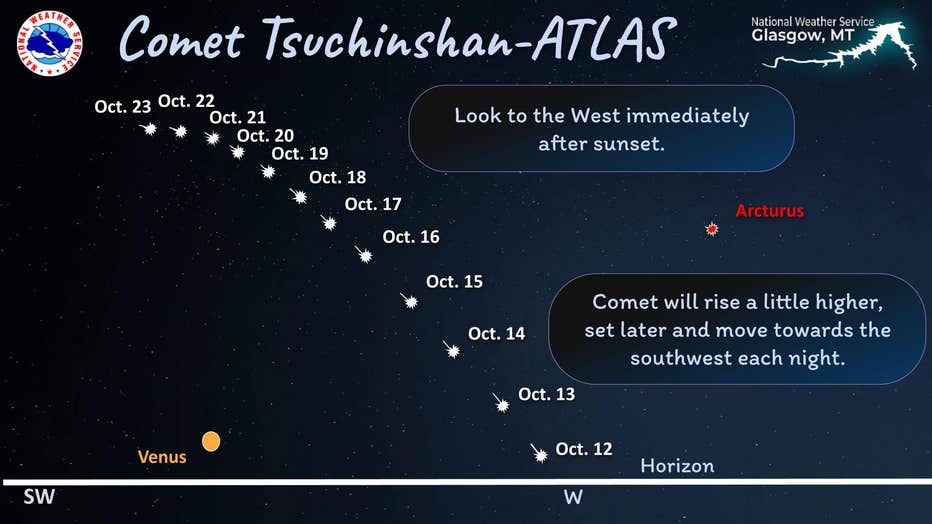Rare comet lights up the sky, won't return for 80,000 years
Comet soars across sky on Oct. 14
A recently discovered comet was visible to the naked eye in the northern United States on Oct 14. This footage was captured by Barry Stevenson showing the Comet Tsuchinshan–ATLAS above Roaring Fork Valley. NASA called this comet sighting a "once-in-80,000-year" event. Credit: Barry Stevenson via Storyful.
(FOX 9) - A rare comet that won’t be seen for another 80,000 years is visible in the night sky through part of October.
Comet sightings
Comet Tsuchinshan-Atlas is making its modern-day debut in spectacular fashion. It’s the first time this comet has been visible to Earth in more than 80,000 years, and it was first discovered by NASA in 2023.
Comets are frozen leftovers from the solar system’s formation. The reason comets have a tail is that it heats up as the comet swings toward the Earth.
Barry Stevenson captured Comet Tsuchinshan–ATLAS above Roaring Fork Valley in Colorado, as seen in the Storyful video above. NASA’s Matthew Dominick also recorded a timelapse from the International Space Station showing the comet as it appeared above the horizon just before sunrise. The video also captured the glow of the northern lights and a few satellites moving above the atmosphere.
Meanwhile, people back on Earth have submitted photos of sightings in Minnesota, which you can see in the gallery below.
Tips for seeing the comet
How to see Comet Tsuchinshan-Atlas
Comet Tsuchinshan-Atlas has been visible just after sunset in Minnesota and elsewhere. FOX 9's Cody Matz shares tips on how to see this once-in-80,000-year sight.
The comet will appear in the western sky approximately half an hour after sunset each evening through part of October.
The best viewing will occur over the next few days before it slowly becomes dimmer to the naked eye and disappears by the end of the month.
The current trajectory shows that if this comet manages to survive its next trip around the sun, it will be 80,000 years before it will fly by Earth again.

Graphic of the Tsuchinshan–ATLAS sighting opportunities. (Credit: National Weather Service Glasgow, Montana) (Supplied)

